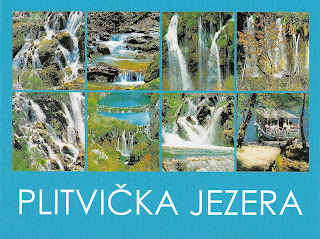This national park is world-famous for its blue lakes and cascades
 |
| Black River |
This postcard was sent by Agi
Plitvice Lakes National Park (Croatian: Nacionalni park Plitvička jezera) is one of the oldest national parks in Southeast Europe and the largest national park in Croatia.
The national park was founded in 1949 and is situated in the mountainous karst area of central Croatia, at the border to Bosnia and Herzegovina. The important north-south road connection, which passes through the national park area, connects the Croatian inland with the Adriatic coastal region.
This postcard was sent by Steffi
 |
| Plitvice Lakes |
The Plitvice Lakes originate in the south of the park area at the confluence of Bijela Rijeka (English White River) and Crna Rijeka (English Black River). - in: wikipedia











